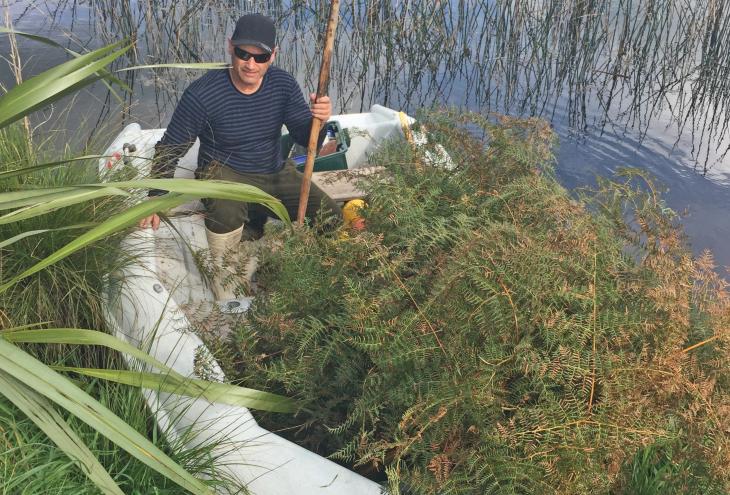CULTURES OPEN TO LEARNING FIND MUTUAL BENEFITS
Indigenous traditional knowledge of the lands, waters, sky, and long been dismissed by Western science as anecdote, mythology, or even superstition. But thanks to the efforts of Indigenous and non-Native scientists and educators, that perspective is changing. More Indigenous knowledge is finding its way into Western science, benefiting everyone. Dr. Darren King, a scientist with New Zealand’s National Institute of Water and Atmospheric Research, has noted that the “wisdom of the M-aori” incorporates “both traditional and nontraditional knowledge, so it’s dynamic, constantly evolving.” The same can be said of traditional cultures — and increasingly of mainstream culture — on our continent and the Pacific Islands, where the integration of Indigenous and Western science can be seen in many areas.
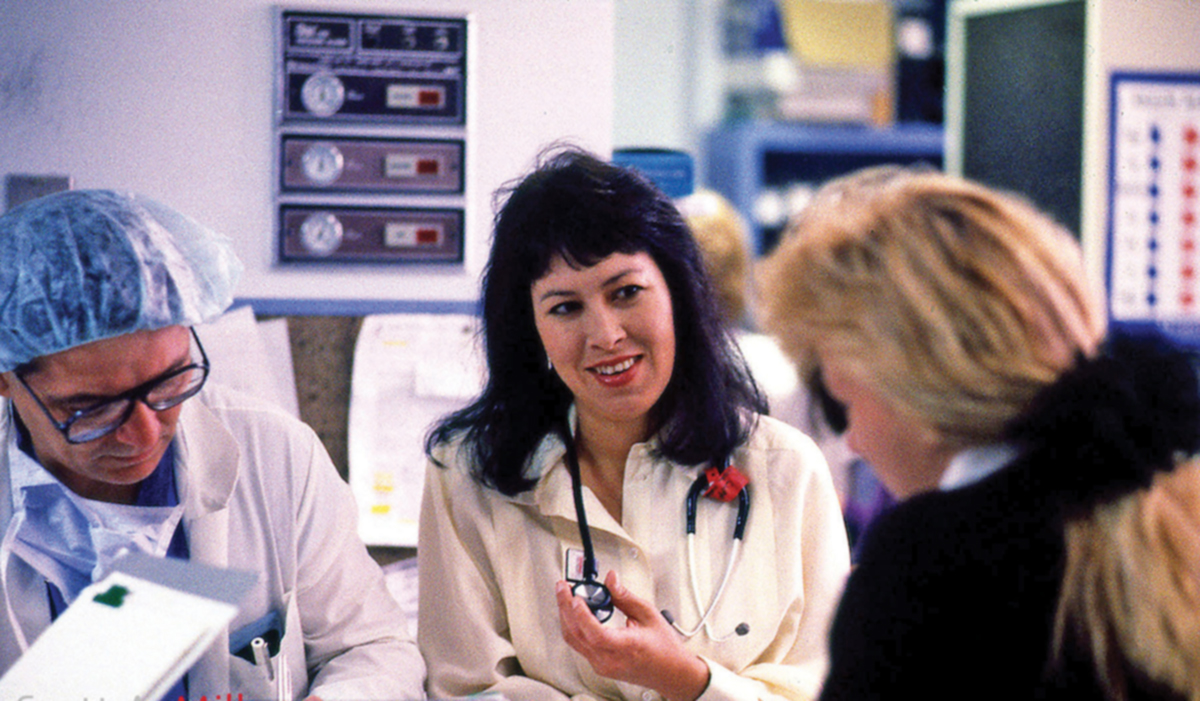
INTEGRATIVE MEDICINE

integrate contemporary medicine
with Indigenous knowledge
in her book "The Scalpel
and the Silver Bear."
One of the best-known examples of cultural intersections in health care is the career of Dr. Lori Alviso Alvord, the first Navajo woman surgeon. After returning to the Navajo Nation to practice, Dr.
Alvord quickly realized that simply healing bodies wasn’t enough. “Navajo teachings and ceremonies emphasize seeing ourselves in connection to the environment,” she says.
Tribal ways of living — as in the emphasis on maintaining the purity of the Earth, the air, and the water — help people live longer, happier lives, says Dr. Alvord. Another aspect of Indigenous culture she points to is the Native regard for families as essential to well-being. “Tribal beliefs incorporate spirituality and metaphysics connected with everything around us,” she adds. “It’s important to care
for all of these.”
Dr. Alvord has spent her career promoting the movement toward integrative medicine. She served as a faculty member and, later, as an associate dean at several medical schools, where she advocated incorporating whole-
A nominee for U.S. Surgeon General in 2013, Dr. Alvord has worked for the past two decades to raise awareness of how combining Native ways of healing with Western medicine results in better outcomes than medical intervention alone. Her journey to integrate contemporary medicine with Indigenous knowledge is outlined in her book The Scalpel and the Silver Bear, which she notes is now being used in college courses.
Dr. Alvord has spent her career promoting the movement toward integrative medicine. She served as a faculty member and, later, as an associate dean at several medical schools, where she advocated incorporating whole-person care. She recently returned to private practice, which gives her more time to deliver lectures on merging the two healing philosophies. And she can point to the progress of integrative medicine: many integrative medicine practices have been found to be able to treat some diseases, or alleviate symptoms.
INTERSECTIONS IN BIOSCIENCES
Dr. Ian Kusabs, who studied at the University of Waikato in Hamilton, New Zealand, is integrating traditional ways of knowing with his Western training. A descendant of Maori iwi, or tribes, Dr. Kusabs is a freshwater biologist who specializes in koura, or freshwater crayfish (Paranephrops planifrons)
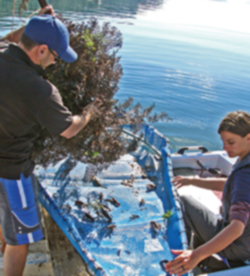
Lake Taupo, New Zealand
But Dr. Kusabs’ science is also strongly informed by his Indigenous knowledge. “My work on koura in the central North Island lakes has been possible only because of my iwi affiliations and upbringing,” he says. “My elders passed the tau koura matauranga (traditional knowledge of the crayfish) on to me and not a government scientist because they knew I would respect it.”
Dr. Kusabs is working to create a sustainable fishery for the crayfish, a “keystone” species for the lake ecosystem and an important food source for Maori. “A lot of our work is restoring lake water quality,” he says. “Benthic dwelling animals such as koura are very sensitive to eutrophication (excessive nutrient input from sources like agricultural runoff) and deoxygenation of the bottom water.”
“My elders passed the tau koura matauranga (traditional knowledge of the crayfish) on to me and not a government scientist because they knew I would respect it.”
— Dr. Ian Kusabs
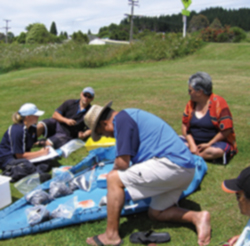
from the Ngati Pikiao tribe,
Lake Rotoiti, New Zealand
To monitor these key populations, Dr. Kusabs uses ancient methods he detailed in his PhD dissertation on the traditional Maori harvesting method, with recommendations for sustainable management. More recently Dr. Kusabs and his colleagues have published papers describing how they incorporate a traditional fishing method, the tau koura, to sample koura. This method involves the placement of bracken fern bundles (known as whakaweku) on the lake bed. The bundles act as artificial habitats. This method not only is an effective quantitative sampling tool but also has fewer size and sex biases than conventional capture methods.
For Dr. Kusabs, it’s important that Native students training for a STEM career hold onto their Indigenous culture — and he is demonstrating that the result can benefit everyone. “We retain the traditional names and history and acknowledge the appropriate iwi and people as we work to manage and sustain the koura,” he says. “We now have a scientifically robust method for sampling koura that is being used in lakes and streams throughout New Zealand.”
TOWARD A BETTER UNDERSTANDING
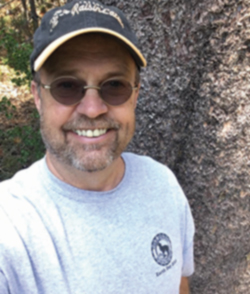
Dr. Jared Dahl Aldern
Of course, merging different approaches does not always go smoothly. Dr. Jared Dahl Aldern is a sustainability educator and historical ecologist who works with California tribes to document traditional land management protocols. He says that in his field, integration is slow. “Scientists are having a hard time seeing themselves as learners,” Dr. Aldern explains. “It’s hard for them to acknowledge that they can learn from non-academically peer-reviewed knowledge.” On the other side, there can be a trust factor on the part of tribes. “There’s always the question of how much information a tribe feels is appropriate to share,” Dr. Aldern says. In addition to the question of cultural appropriation, he sees a “colonial tendency” on the part of some non-Native scientists and land managers, who say, “Tell us how to do it and we’ll take it from there.”
Dr. Aldern says that in his field, integration is slow: “scientists are having a hard time seeing themselves as learners.”
Dr. Alvord notes that non-Natives need to be engaged in order to learn traditional ways. “These things don’t get validated until they figure it out for themselves,” she says. Dr. Aldern agrees and urges non-Natives to read origin stories closely to see the interconnections on specific topics, and to see themselves as learners as well as subject matter experts. “Go to gatherings and build a collaboration,” he says. “Be willing to create a reciprocal relationship. After all, what’s in it for the tribe to collaborate with you?”
Progress may be slow, but it is occurring. “It’s taken Western medicine a long while to understand traditional ways,” Dr. Alvord points out. And when both sides are open to learning, understanding and progress happen. “I would say there are many more gems of knowledge out there to be uncovered,” Dr. Kusabs says. “I believe that Indigenous knowledge together with Western science produces the best possible outcomes.”


